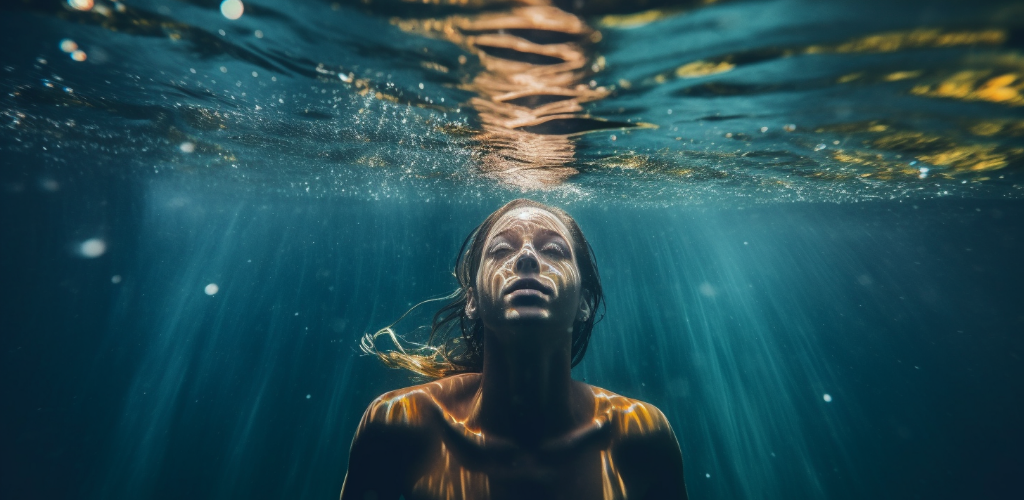If you’ve been keeping an ear to the ground in the world of extreme sports, you’ve likely heard the term ‘free diving’ thrown around. But what’s free diving, you might ask? Well, stick around because we’re about to dive deep into the world of free diving, uncovering the thrill, the basics, the appeal, and much more. Ready to take the plunge?
The Basics of Free Diving
Free diving, also known as apnea, is a form of underwater diving where the diver relies solely on their ability to hold their breath instead of using breathing apparatus like in scuba diving. But it’s not a newfangled trend; in fact, its roots go way back. The history of free diving is as deep as the ocean itself, originating from ancient times when people dove for food, pearls, and sponge.
What sets free diving apart from other diving forms is its simplicity and the direct connection it forms between the diver and the underwater world. And guess what? This sport is gaining popularity like wildfire. The reasons? We’ll get into that in a bit.
The Thrill and Appeal of Free Diving
Have you ever dreamt of flying? Of feeling weightless, free, and tranquil? That’s the allure of free diving. It allows you to experience the underwater world in its purest form, unhindered by bulky equipment. The silence, the peace, the feeling of being one with the ocean – it’s an experience that words often fail to capture.
But it’s not just about the tranquility. There’s also the thrill of pushing your limits, of venturing into the unknown. It’s about exploring the last frontier on earth, where every dive is a new adventure. And perhaps that’s why free diving is making waves in the world of water sports.
Necessary Skills and Training for Free Diving
Ever wondered what it takes to be a free diver? Well, swimming proficiency is a top-tier requirement. Of course, it seems obvious, right? But it’s not just about being able to swim; it’s about being comfortable and confident in the water as well. Free diving is not for the faint-hearted; it’s for those who are ready to embrace the adrenaline and take the plunge.
And yes, there’s training involved. Proper training is crucial in free diving. It’s not a sport you just jump into without understanding the risks and learning how to manage them. So, before you dive headfirst into free diving, remember, training is key!
Breath Training for Free Diving
Did you know that the human body is naturally equipped for free diving? It’s all thanks to something called the mammalian dive reflex. But to tap into this reflex and dive effectively, you need breath training. Breath training techniques are like the backbone of free diving. They teach you how to hold your breath longer and make the most of each dive.
Remember, in free diving, your breath is your life source. So, it’s critical to understand how to control and maximize it. Cool, isn’t it?
Safety Precautions and Risks in Free Diving
With every thrilling sport like free diving, comes a set of risks. But don’t let that discourage you! Instead, use it as motivation to learn and follow the safety precautions to ensure a safe and enjoyable diving experience.
Some risks include blackouts, decompression sickness, and barotrauma. Don’t get scared off by these terms! They’re largely preventable if you stick to your training, never dive alone, and always listen to your body.
Yes, free diving is a thrilling sport, but it’s also a sport that demands respect. Respect for the ocean, respect for the sport, and most importantly, respect for your own limits.
The Mental and Physical Benefits of Free Diving
Free diving is not just about the thrill and adventure. It goes beyond that. It’s about the physical fitness you gain and the mental wellness you achieve through regular diving.
Physically, free diving is a full-body workout. It strengthens your muscles, increases your lung capacity, and improves your flexibility. But the benefits don’t stop there. The mental benefits are equally, if not more, rewarding.
Think about it. When you’re underwater, it’s just you and the ocean. It’s tranquil and serene. This tranquillity can help reduce stress, increase your focus, and even promote mindfulness. Now, who wouldn’t want that?
Essential Free Diving Equipment
If you’re going to plunge into the depths of the ocean on a single breath, there are a few essential pieces of equipment you’ll need. This isn’t just about maximizing your performance; it’s also about ensuring your safety.
The first and most important item is your mask. Unlike scuba diving masks, free diving masks are low volume to minimize the pressure change that occurs as you descend. This makes equalizing easier.
Next up, we have fins. Free divers typically use long, flexible fins that allow for efficient movement underwater. The length and flexibility of these fins help to maximize propulsion with each kick, thus conserving energy.
Last but not least, a good wetsuit is crucial for free diving. Not only does it protect you from the cold, but it also provides buoyancy and protects against cuts and scrapes. Wetsuits designed for free diving are typically smooth and tight-fitting to reduce drag underwater.
Free Diving Hotspots Around the World
Ready to take the plunge? Here are some of the top destinations around the world for free diving.
- Bahamas: With its crystal clear waters and rich marine life, the Bahamas is a free diver’s paradise. The Blue Hole on Long Island is a particularly popular spot.
- Indonesia: The Indonesian archipelago, with its warm waters and vibrant coral reefs, offers numerous free diving opportunities. The Gili Islands and Bali are among the top choices.
- Red Sea, Egypt: The Red Sea is famous for its stunning coral reefs and abundant marine life. Dahab’s Blue Hole is one of the most challenging and exciting places to free dive.
- Hawaii, USA: The warm, clear waters of Hawaii make it an excellent location for free diving. The Big Island, in particular, has several great spots.
- Amorgos, Greece: Featured in the movie “The Big Blue,” the waters around Amorgos offer excellent visibility, making it a favorite among free divers.
So, which of these free diving hotspots will you explore first?
Getting Started With Free Diving
So, you’re intrigued by the world of free diving and want to take the plunge, but where should you start? A great first step is to enroll in a free diving course. These courses are designed to equip you with the essential skills and knowledge needed to dive safely and enjoyably. They teach you everything from breath holding techniques to safety procedures and how to use your equipment properly.
Another important step is to get a medical check-up. Free diving is a physically demanding sport, and it’s vital to ensure that your body is up to the challenge. It’s also a good idea to start swimming regularly to build up your stamina and comfort in the water. And remember, free diving is a journey, not a destination. Take your time, enjoy the process, and don’t rush your progress.
The Future of Free Diving
What does the future hold for free diving? It’s an exciting time for the sport, with new advancements and trends emerging all the time. One area to watch is the development of new technologies to enhance safety and performance. For instance, innovative dive computers and improved fin designs are making diving safer and more efficient than ever.
Furthermore, we’re seeing an increasing interest in competitive free diving. More and more people are pushing the boundaries of what’s possible, diving deeper and holding their breath for longer. Could this be the next big thing in the world of free diving? Only time will tell!
Final Thoughts
We’ve taken a deep dive into the fascinating world of free diving, exploring everything from its origins and appeal to the skills required and the benefits it offers. But as with any sport, the best way to truly understand it is to experience it for yourself.
Whether you’re looking for a new challenge, a way to connect with nature, or a path to personal growth, free diving has something to offer. So why not take the plunge and discover what lies beneath the surface? You never know, you might just find your new passion!




